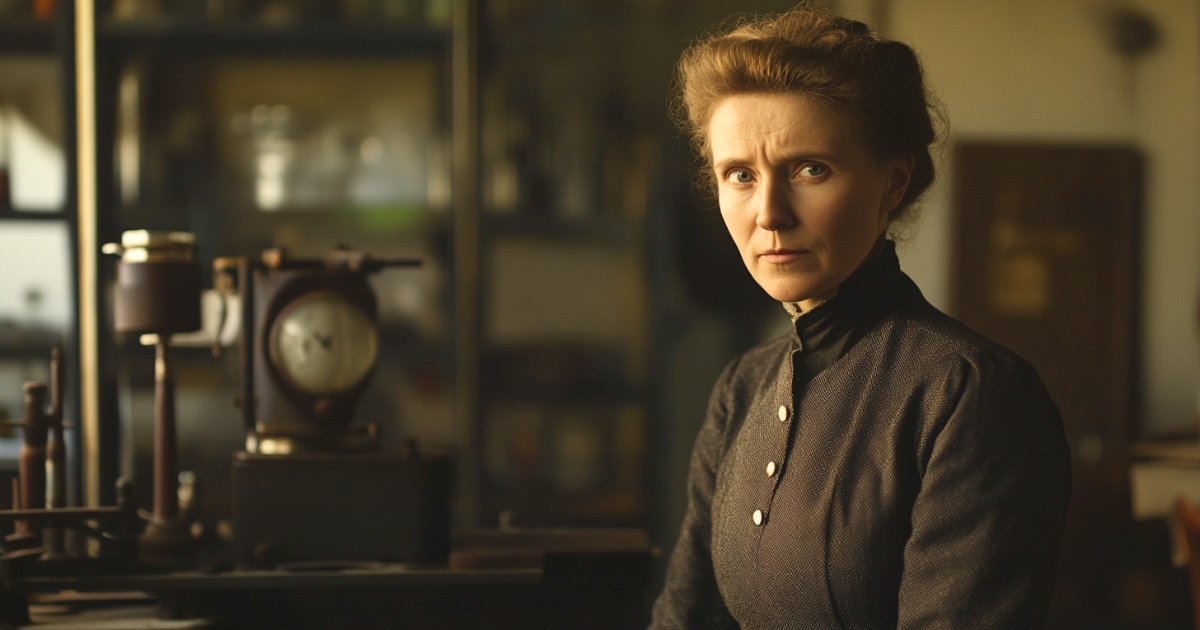In the early 20th century, a woman revolutionized the scientific world. Her name was Marie Curie. Her research on radioactivity made significant contributions to modern science and medicine, leaving a lasting impact. However, behind her brilliant achievements lay days of unimaginable hardship and determination. This article focuses on Marie Curie’s laboratory notebooks, delving into her research life, the process of her discoveries, and her struggles in the scientific community of her time.
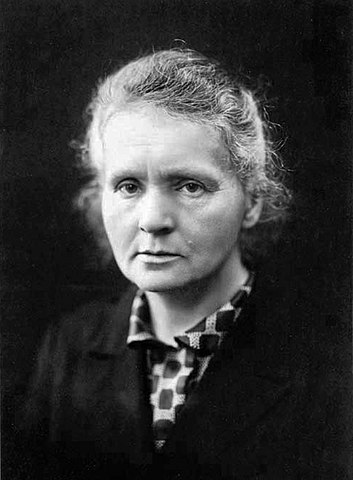
Marie Curie around 1920. Her gaze reflects her passion and determination for science. By Henri Manuel – Christie’s
- Marie Curie’s Background and Passion for Science
- Meeting Pierre Curie and Their Research Partnership
- Radiation and Radioactivity: Basic Concepts
- Discoveries Chronicled in Experimental Notes
- The Dangers of Radioactivity Research and Its Health Effects
- Struggles as a Woman Scientist
- The Path to the Nobel Prize
- Marie Curie and Modern Radiation Research and Nuclear Industry
- Impact on Women Scientists and Current Status
- Marie Curie’s Humanity and Daily Life
- Global Impact of Radioactivity Research
- Conclusion
Marie Curie’s Background and Passion for Science
Marie Curie (born Maria Skłodowska) was born on November 7, 1867, in Warsaw, Poland. She grew up in a family that valued science and education. However, Poland was under Russian rule at the time, making it difficult for women to receive higher education. Marie studied during the day and worked as a tutor at night to earn money for her studies in Paris.
In 1891, she enrolled at the Sorbonne University in France, earning degrees in physics and mathematics. Even in Paris, she lived in poverty while dedicating herself to her studies. The passion for science she developed during this period supported her throughout her life.
Meeting Pierre Curie and Their Research Partnership
In 1894, Marie met physicist Pierre Curie, who became her research partner. They married in 1895. They shared a common passion for science, with Marie later saying, “We complemented each other and walked towards the same ideals.”
Pierre was already known for his research in magnetism, but he was strongly drawn to Marie’s radioactivity research, and together they pioneered a new field of science.
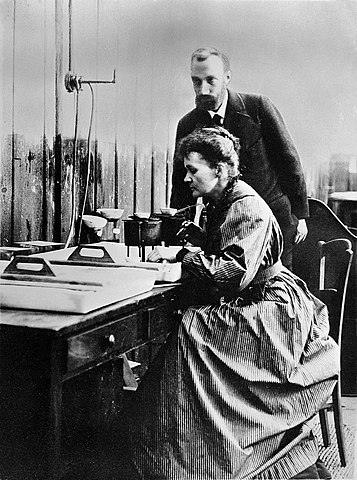
Marie and Pierre Curie working together in their laboratory. Their collaboration formed the foundation for scientific discoveries. By Wellcome Collection gallery (CC BY 4.0)
Radiation and Radioactivity: Basic Concepts
Radiation is a form of energy released when atoms decay. This radiation includes alpha rays, beta rays, and gamma rays. Radioactivity refers to the phenomenon of substances spontaneously emitting radiation, which was the subject of Marie Curie’s research. She was the first to use the term “radioactivity” and systematized the study of this phenomenon.
Discoveries Chronicled in Experimental Notes
Marie Curie’s laboratory notebooks meticulously record her numerous experiments and their results. In 1897, she began experiments measuring the radioactivity of pitchblende (uranium ore), noticing that this ore had stronger radioactivity than expected. This suggested the possibility of unknown new elements being present.
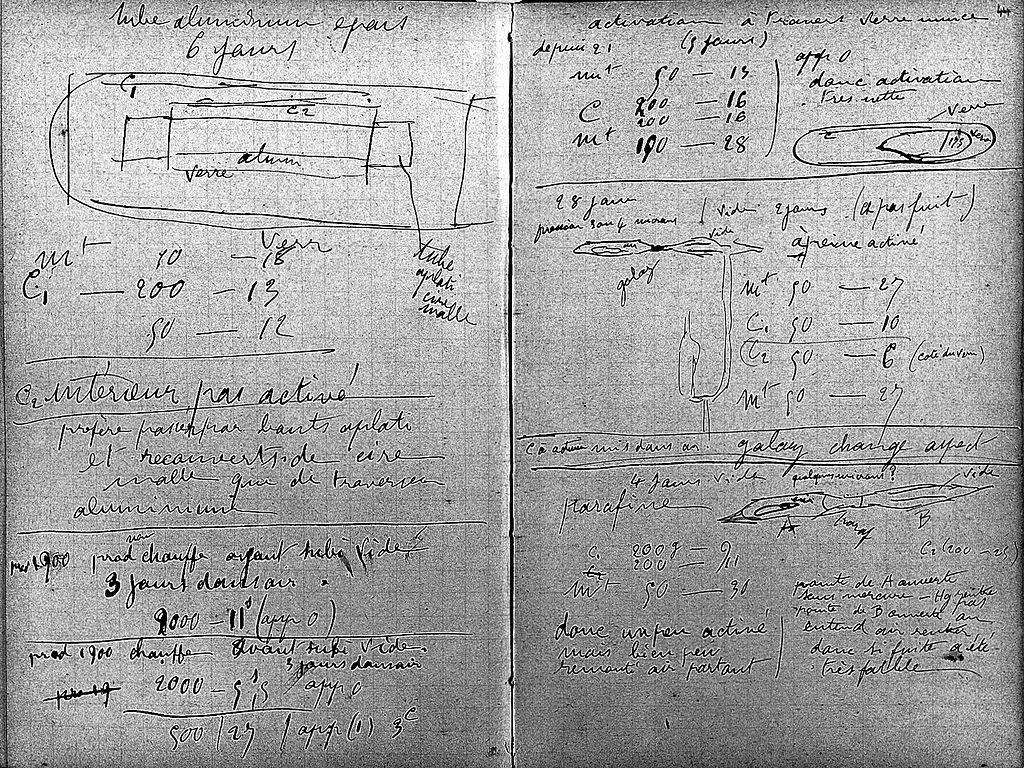
A page from Marie Curie’s laboratory notebook. It contains detailed records of her radioactivity research. By Wellcome Collection gallery, CC BY 4.0
In 1898, she and Pierre discovered two new elements: polonium and radium. Polonium was named after Marie’s native Poland, while radium was named for its strong radioactive properties. These discoveries shocked the scientific world.
The Dangers of Radioactivity Research and Its Health Effects
At the time, little was known about the effects of radiation on the human body. Marie and Pierre conducted their research daily, exposed to radiation without understanding its dangers. They handled large amounts of pitchblende to extract radioactive substances, with Marie performing experiments by hand.
Pierre Curie expressed awe and excitement about the unknown phenomena of radiation, telling a friend, “The continuous light emission from matter holds a charm that no one has yet fully unraveled.” This statement illustrates how fresh and astonishing radiation research was to scientists of the time.
In her later years, Marie Curie’s health deteriorated due to radiation exposure, and she died of leukemia in 1934. Ironically, her life was claimed by the very radioactive substances she had researched.
Struggles as a Woman Scientist
From the late 19th to early 20th century, it was extremely rare for women to be recognized as scientists. Marie Curie faced many difficulties due to her gender. For instance, when she was to receive the Nobel Prize in Physics in 1903, her name was initially omitted from the list of candidates, and it was only corrected after her husband Pierre protested.
She once said, “In science, we must be interested in things, not in persons.” This belief symbolizes her unwavering conviction and passion for science.
The Path to the Nobel Prize
In 1903, Marie Curie, along with her husband Pierre Curie and Henri Becquerel, received the Nobel Prize in Physics. This award made her the first woman to receive a Nobel Prize, establishing her position in the scientific community.
In 1911, she received the Nobel Prize in Chemistry alone for her discovery of radium and polonium. She became the first person to win Nobel Prizes in two different fields, earning international recognition for her contributions to science.
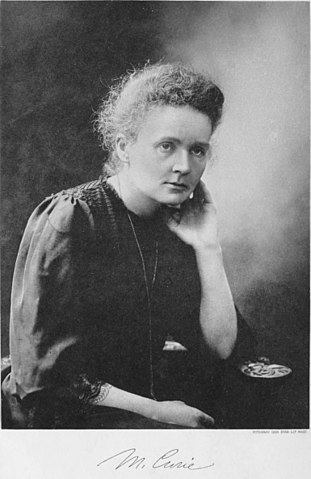
Marie Curie receiving the Nobel Prize in Chemistry in 1911. She became the first person to win Nobel Prizes in two different fields.
Marie Curie and Modern Radiation Research and Nuclear Industry
Marie Curie’s research has had a profound impact on modern radiation research and the nuclear industry. The radium she discovered was used for cancer treatment for many years. Her research laid the foundation for radiation therapy, diagnostic techniques (such as X-ray imaging), and nuclear energy.
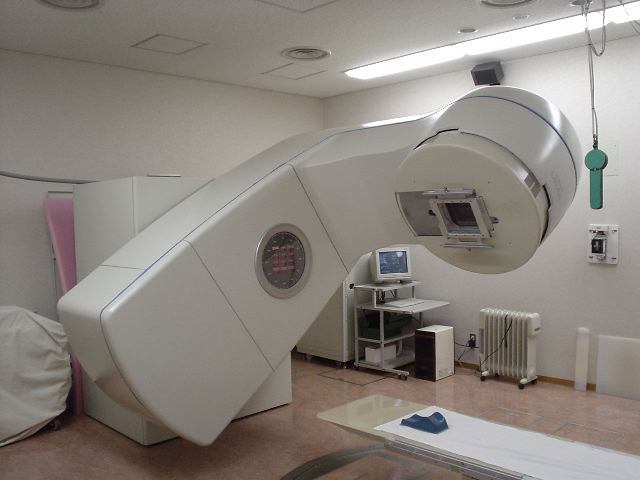
A linear accelerator widely used in modern radiation therapy. Marie Curie’s radioactivity research led to the development of such advanced medical equipment. ja:User:Martin~jawiki, CC BY-SA 3.0
Her achievements also hold an important place in the modern nuclear industry. The handling and application of radioactive materials she discovered are utilized in nuclear medicine and radiation protection, demonstrating the wide-ranging and profound influence of her research.
Impact on Women Scientists and Current Status
Marie Curie’s achievements became an important milestone for women scientists. She demonstrated the presence of women in science and influenced many. For example, women inspired by her, such as theoretical physicist Lisa Randall and Nobel Prize-winning chemist Frances Arnold, have made groundbreaking achievements in their respective fields.
Today, while the proportion of women scientists has increased, gender disparities still exist. Nevertheless, thanks to pioneers like Marie Curie who paved the way, opportunities for women to take leadership roles in scientific fields have increased.
Marie Curie’s Humanity and Daily Life
While passionate about science, Marie Curie led a very modest life. She used her home kitchen as a laboratory and strived to balance family and science. She reportedly said, “I do not seek praise from others. My only wish is to live for science and contribute to it.”
Her simple lifestyle reflected her dedication and belief in science, showing how important science was to her.
Global Impact of Radioactivity Research
Marie Curie’s research had a significant impact on the scientific community worldwide. Her discoveries influenced not only the development of physics and chemistry but also the medical and industrial fields. In particular, radiation therapy is widely used as a means of cancer treatment around the world.
Her work influenced scientists not only in Europe but also in America, Asia, and around the world, sparking the global development of radiation research. Her influence continues today in various fields including physics, chemistry, and medicine.
Conclusion
Marie Curie’s laboratory notebooks are valuable documents that reflect the forefront of scientific research in the early 20th century. Her life was characterized by an infinite curiosity for science and an unwavering belief in the pursuit of truth. Her achievements proved that science could change the world.
Her research and legacy continue to influence many scientists today. Moreover, her ability to overcome the challenges she faced demonstrates that regardless of gender or origin, talent and effort can lead to success at the forefront of science. Her life and achievements continue to illuminate the future of science and will continue to influence many people in the future.
